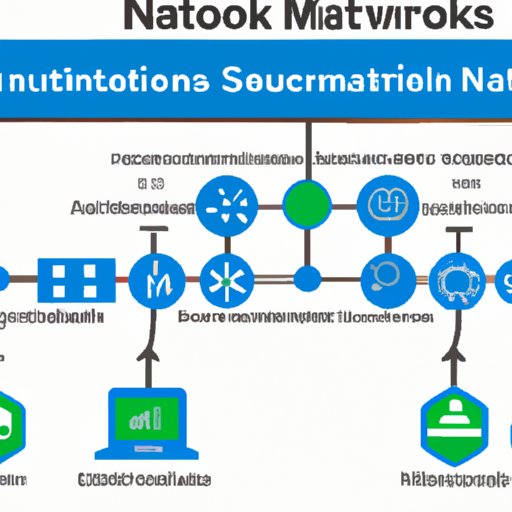Introduction
Network automation is a rapidly growing field in the world of IT operations. It involves using automated tools and technologies to manage, configure, and monitor networks. By automating network administration tasks, network engineers can save time, reduce errors, and improve efficiency. In this article, we’ll explore what network automation is, the benefits it offers, and how to implement it in your IT infrastructure.

An Introduction to Network Automation
Network automation is a process that uses software and scripts to automate the configuration, management, monitoring, and maintenance of networks. It enables IT teams to quickly and easily deploy and manage networks, reducing the need for manual processes and freeing up valuable time for other tasks. Network automation also helps improve security by reducing the potential for human error.
Network automation tools and technologies are used to automate network administration tasks such as configuring firewalls, setting up routers, monitoring network traffic, and more. These tools and technologies include network automation platforms, network configuration management tools, and network monitoring solutions. They can be used to automate routine tasks, streamline IT operations, and simplify the management of complex networks.
Network automation can provide many benefits, such as improved efficiency, reduced costs, increased reliability, and improved security. It can also help organizations meet compliance requirements and reduce the risk of outages or data loss. Additionally, network automation can help organizations reduce their reliance on manual processes and free up resources for more strategic initiatives.
Examining Network Automation Use Cases
Organizations across all industries are leveraging network automation to simplify IT operations and improve efficiency. Here are some examples of how network automation can be used in practice:
- Automating firewall configurations to ensure that only authorized users have access to the network.
- Configuring routers and switches to prioritize specific types of traffic and ensure that critical applications and services are always available.
- Monitoring the health of the network to detect potential issues before they become problems.
- Automating the deployment of software updates to keep systems secure and up-to-date.
- Automating the provisioning of new network devices to reduce the time and effort required to add new equipment.
These use cases demonstrate the potential of network automation to simplify IT operations and improve the performance of the network. By automating these tasks, organizations can save time and money, reduce errors, and improve the reliability and security of their networks.

Best Practices for Implementing Network Automation
When implementing network automation, it’s important to consider the right tools and technologies for the job. Organizations should identify a network automation solution that meets their specific needs and provides the necessary features and functionality. Additionally, they should establish a network automation strategy that outlines the goals, objectives, and timeline for deploying and managing the automation system.
Once the right solution has been identified, organizations should begin to implement the tools and technologies necessary for successful network automation. This includes deploying the automation platform, configuring the network devices, and integrating the various components into the overall automation system. Additionally, organizations should develop policies and procedures for managing and monitoring the automation system.

The Future of Network Automation
As network automation becomes increasingly prevalent, organizations should be aware of the latest trends and developments in the field. For example, artificial intelligence (AI) and machine learning (ML) are becoming more widely used in network automation, enabling organizations to automate more complex tasks and gain deeper insights into network performance. Additionally, cloud-based solutions are becoming more popular, allowing organizations to easily deploy and manage their automation systems.
Network automation will continue to evolve in the coming years, with new technologies and tools emerging to make it even easier to automate IT operations. As organizations embrace these advancements, they will be able to take advantage of the cost savings, efficiency gains, and improved security that network automation has to offer.
Conclusion
Network automation is a powerful tool for simplifying IT operations and improving network performance. By automating routine tasks, organizations can save time and money, reduce errors, and improve the reliability and security of their networks. To get the most out of network automation, organizations should identify the right tools and technologies for the job, develop a strategy, and follow best practices for implementation. As network automation continues to evolve, organizations should stay up to date on the latest trends and developments to ensure they are taking full advantage of the technology.
(Note: Is this article not meeting your expectations? Do you have knowledge or insights to share? Unlock new opportunities and expand your reach by joining our authors team. Click Registration to join us and share your expertise with our readers.)
